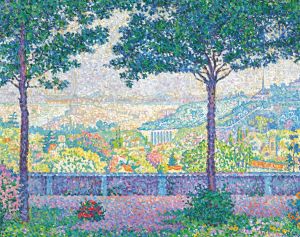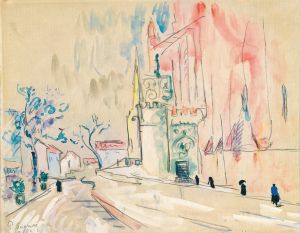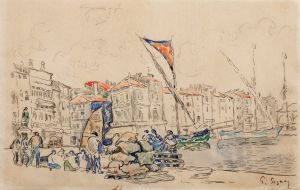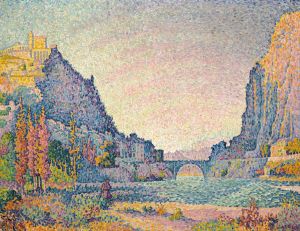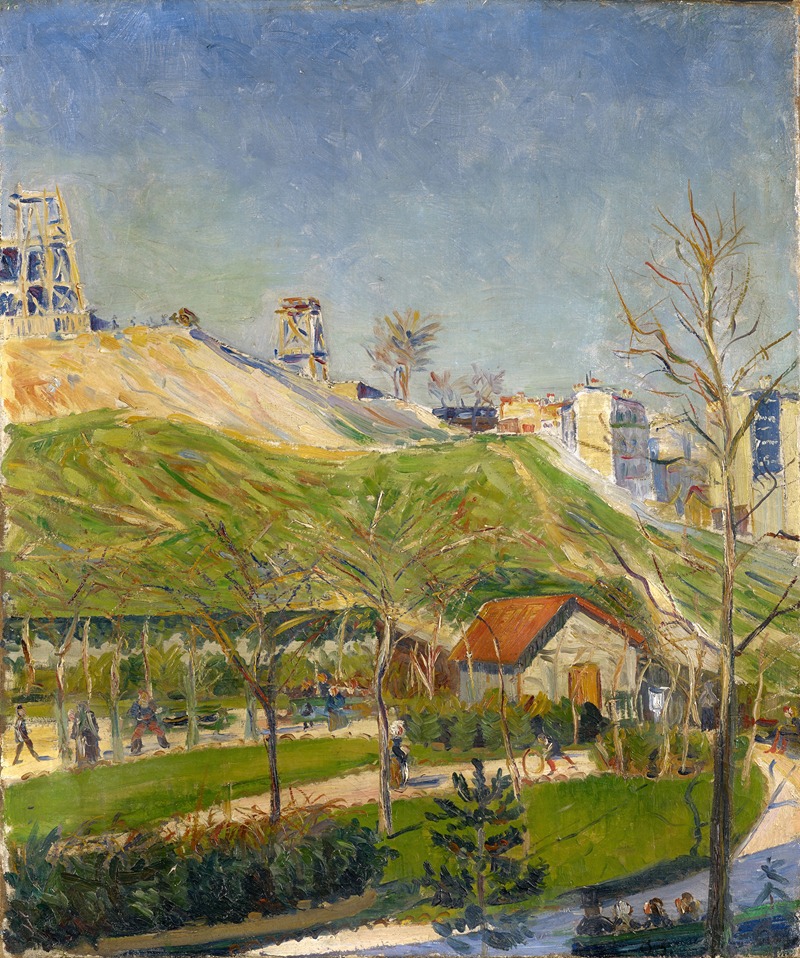
The Square Saint-Pierre
A hand-painted replica of Paul Signac’s masterpiece The Square Saint-Pierre, meticulously crafted by professional artists to capture the true essence of the original. Each piece is created with museum-quality canvas and rare mineral pigments, carefully painted by experienced artists with delicate brushstrokes and rich, layered colors to perfectly recreate the texture of the original artwork. Unlike machine-printed reproductions, this hand-painted version brings the painting to life, infused with the artist’s emotions and skill in every stroke. Whether for personal collection or home decoration, it instantly elevates the artistic atmosphere of any space.
Paul Signac was a prominent French Neo-Impressionist painter, known for his role in developing the Pointillist style alongside Georges Seurat. One of his notable works is "The Square Saint-Pierre," which exemplifies his mastery of color and technique.
"The Square Saint-Pierre" was painted in 1887, during a period when Signac was deeply engaged with the principles of Neo-Impressionism. This movement, which emerged in the late 19th century, was characterized by a scientific approach to color and light, building upon the Impressionist interest in capturing the effects of light on the natural world. Signac, along with Seurat, was instrumental in advancing this style, which came to be known as Pointillism or Divisionism. This technique involved applying small, distinct dots of color to the canvas, which would visually blend at a distance to create a luminous effect.
In "The Square Saint-Pierre," Signac captures a scene in the Montmartre district of Paris, a location known for its vibrant artistic community. The painting depicts a public square, likely bustling with the everyday life typical of the area. Signac's use of Pointillism is evident in the meticulous application of color, which creates a shimmering effect that brings the scene to life. The artist's palette in this work is bright and varied, with a focus on capturing the interplay of natural light and shadow.
Signac's approach to painting was heavily influenced by contemporary scientific theories of color and perception. He believed that by placing contrasting colors next to each other, he could enhance the vibrancy of each hue, creating a more dynamic and engaging visual experience. This method is clearly demonstrated in "The Square Saint-Pierre," where the juxtaposition of complementary colors adds depth and energy to the composition.
Throughout his career, Signac was not only a practitioner of Neo-Impressionism but also an advocate for the movement. He wrote extensively on the subject, articulating the theoretical underpinnings of Pointillism and its potential to revolutionize the art world. His commitment to these principles is evident in "The Square Saint-Pierre," which stands as a testament to his dedication to exploring new ways of seeing and representing the world.
"The Square Saint-Pierre" is a significant work within Signac's oeuvre, reflecting both his technical skill and his philosophical engagement with the ideas of his time. It is a prime example of how Neo-Impressionism sought to capture the essence of modern life through a scientific approach to art. Signac's ability to convey the vibrancy and movement of urban life through the careful application of color and form makes this painting a noteworthy contribution to the history of art.
Today, Paul Signac is celebrated as a key figure in the development of modern art, and works like "The Square Saint-Pierre" continue to be studied and admired for their innovative approach and enduring beauty. His legacy is evident in the continued appreciation of Neo-Impressionism and its influence on subsequent generations of artists.









